Welcome to our article on the art of structured cabling with Ethernet wires. In today’s digital age, an efficient and reliable communication network is crucial for businesses and individuals alike. Structured cabling installation plays a vital role in creating a well-organized and optimized network infrastructure. Whether you are setting up an office or a commercial building, understanding the benefits of structured cabling is essential.
Structured cabling provides a comprehensive telecommunications infrastructure system that offers numerous advantages. From improved efficiency to scalability, this system ensures seamless connectivity and enables the integration of various telecommunication hardware. By organizing and aggregating fiber optic or copper wiring, along with supporting components and conduits, structured cabling simplifies the construction of cable infrastructure for voice and data communication devices.
One of the key benefits of structured cabling is its flexibility. With a properly designed and deployed system, you can easily adapt and scale your network as your needs evolve. This scalability not only allows for future expansions but also saves costs in the long run. Additionally, structured cabling improves uptime, reduces downtime, and enhances overall system performance.
Furthermore, structured cabling contributes to the visual appeal of your network. With neatly organized and properly labeled cables, your network infrastructure not only functions efficiently but also looks aesthetically pleasing. This attention to detail enhances the overall professionalism of your workspace.
In the sections to follow, we will delve deeper into the components and workings of structured cabling systems, including the role of Ethernet cables and different categories of cables. We will also explore the variety of networking and cabling products available in the market to help you create a reliable and high-performing network that meets your specific requirements.
So, stay tuned as we embark on an informative journey through the world of structured cabling with Ethernet wires. Discover how this art can revolutionize your communication network and pave the way for a more connected and efficient future.
What is a Structured Cabling System?
A structured cabling system is a comprehensive telecommunications infrastructure system that includes various components such as low voltage cabling, trunks, patch panels, hardware ports, and more. It is designed to support a wide range of voice and data communication devices in an office or commercial building. The system connects telecommunication hardware, security cameras, HVAC facilities, and entry access points. The construction of a structured cabling system requires adherence to strict specifications for electrical transmission, cable lengths, resistance, and cable fabrication. When properly built, structured cabling systems offer flexibility, improve uptime, and can be easily scaled to meet increased usage. They also provide a good return on investment by reducing downtime and improving productivity.
How Does Structured Cabling Work?
Structured cabling systems play a crucial role in establishing efficient and organized telecommunications infrastructure in buildings. These systems consist of various subsystems that span across the entire building, ensuring seamless connectivity for voice and data communication devices. Understanding how these subsystems work together is vital to the successful implementation and management of structured cabling systems.
Entrance Facility
The entrance facility serves as the starting point of the structured cabling system. It is the location where the telecom company’s cabling ends, and the private cabling system begins. The entrance facility typically includes demarcation points, connecting hardware, and other devices that facilitate the transition from the external provider’s network to the internal network. It serves as the primary entrance for telecommunication services, such as internet connectivity and telephone lines.
Telecommunications Enclosure
The telecommunications enclosure houses the termination points for the backbone and horizontal cabling of the structured cabling system. It serves as a centralized hub where different cables converge and connect to network switches, routers, and other telecommunication equipment. The enclosure provides a secure and organized space for managing and accessing the cabling infrastructure. It also allows for efficient troubleshooting and maintenance activities.
Consolidation Point
Consolidation points are strategically located throughout the building near workstations and areas where additional connectivity may be required. These points enable easy adjustment of floorplans and modular office furniture without the need for extensive rewiring or disruptions. Consolidation points allow for the seamless expansion and relocation of network equipment and facilitate future scalability of the structured cabling system.
Work Area Components
Work area components refer to the physical locations where end users’ equipment, such as computers, phones, and other devices, are connected to the outlets in the horizontal cabling subsystem. These components include wall plates, jacks, and patch cords that enable connectivity between the end-user devices and the structured cabling system. By providing easy access to network services, work area components enhance productivity and enable efficient communication within the workplace.
Structured cabling systems also support a wide range of low voltage systems, including Ethernet cabling installation, voice and data cable installation, security system cabling, and intercom cabling. These systems are designed to handle the demands of modern workplaces and provide reliable connectivity for various applications.
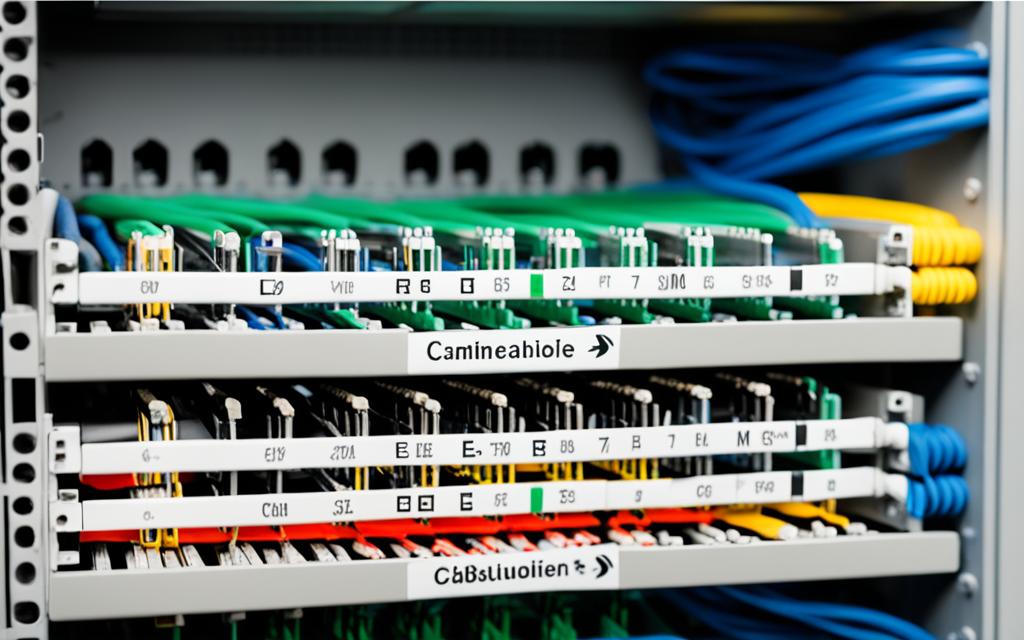
As shown in the image above, the telecommunications enclosure serves as a central hub for the structured cabling system, enabling efficient organization and management of the network infrastructure.
Ethernet Cable Structure
Ethernet cables are essential components used to connect various devices, such as computers, phones, and printers, to a local area network (LAN). These cables enable seamless data communication and networking within an office or commercial setting. Understanding the structure of ethernet cables is crucial for optimizing network performance and minimizing interference.
An ethernet cable consists of four twisted wire pairs, each containing eight insulated copper wires. The twisted pairs play a vital role in reducing noise and electromagnetic interference (EMI) through cancellation and electromagnetic balance. This design helps maintain signal integrity and prevents data corruption during transmission.
Additionally, ethernet cables may incorporate shielding to further reduce EMI and block external interference from other electronic devices. The cable’s outer jacket provides protection and insulation to the internal wires, ensuring durability and longevity.
To ensure safe and reliable operation, some ethernet cables also feature a drain wire. The drain wire functions as a grounding conductor, diverting excess current and preventing equipment damage caused by electrical surges.
Here is an overview of the different types of ethernet cable shielding:
| Shielding Type | Description |
|---|---|
| Unshielded (U) | Lacks additional shielding, which makes it more susceptible to external interference. |
| Foil Shielded (F) | Utilizes a metallic foil around the cable to block EMI noise from other electronic devices. |
| Braided Shielding (S) | Features a woven shield made of conductive material, providing high levels of EMI protection. |
| Foil and Braided Shielding (SF) | Combines both foil and braided shielding for enhanced EMI resistance. |
The choice of shielding depends on the specific requirements of the network and the level of noise reduction needed. Certain environments, such as data centers or industrial settings, may necessitate higher levels of shielding to maintain optimal network performance.
Ethernet cables play a critical role in ensuring reliable connectivity and data transfer within structured cabling systems. Their well-designed structure and shielding mechanisms contribute to the overall efficiency and performance of a network.
Comparison of Ethernet Category (CAT) Cable Types
Ethernet cables are an essential part of structured cabling systems, providing reliable connectivity for various applications such as voice, data, security, and surveillance. The Telecommunications Industry Association (TIA) has developed a category rating system for Ethernet cables, which includes several cable types such as Cat 3, Cat 5, Cat 6, Cat 7, and more. Each category of cable has different specifications, including cable distance, frequency, and shielding, making them suitable for specific applications.
Here is a comparison of the most commonly used Ethernet category cable types:
| Cable Type | Applications | Cable Distance | Frequency | Shielding |
|---|---|---|---|---|
| Cat 3 | Basic voice and data applications | Up to 100 meters (328 feet) | Up to 10 Mbps | Unshielded (U) |
| Cat 5 | High-speed data and voice applications | Up to 100 meters (328 feet) | Up to 100 Mbps | Unshielded (U), Foil Shielded (F), or Braided Shielding (S) |
| Cat 6 | High-performance data and voice applications | Up to 55 meters (180 feet) | Up to 1 Gbps | Unshielded (U), Foil Shielded (F), or Braided Shielding (S) |
| Cat 7 | High-speed data and voice applications in high-electromagnetic radiation areas | Up to 100 meters (328 feet) | Up to 10 Gbps | Foil Shielded (F) and Braided Shielding (S) |
Note: There are additional cable types beyond Cat 7, such as Cat 7a, which provide even higher bandwidth and can sustain transmission speeds over longer distances.
When choosing the appropriate Ethernet cable for your structured cabling needs, it is important to consider the specific requirements of your applications, the desired cable distance, and the level of shielding required to minimize interference and ensure reliable performance.
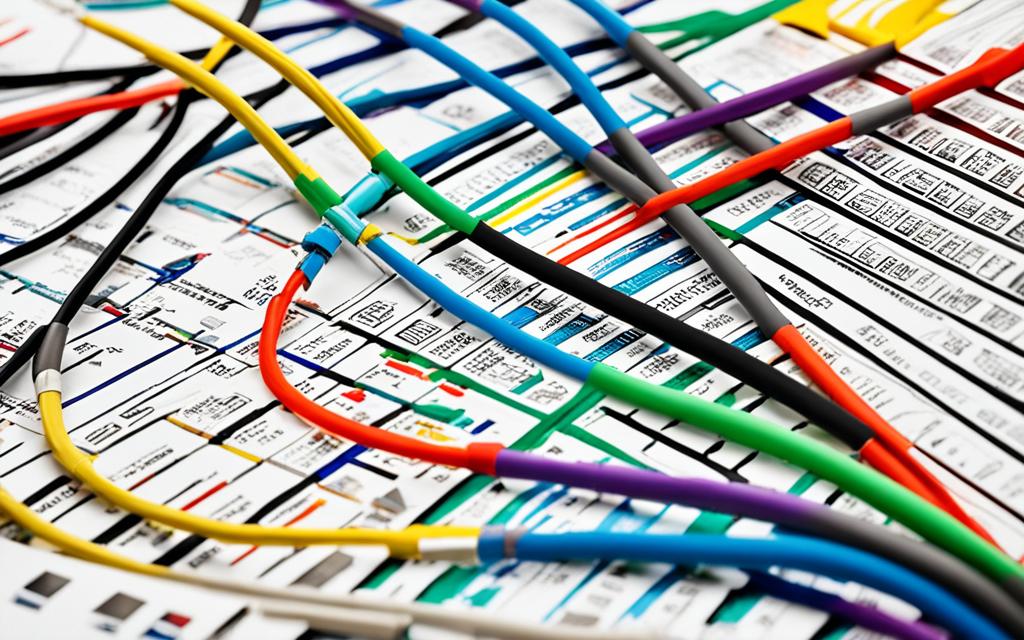
Networking and Cabling Products
When it comes to networking and cabling products, Cabling Plus is your go-to source for a wide range of options. They offer an extensive selection of products designed for various applications, ensuring that you can find exactly what you need to meet your networking requirements. With their professional-grade products from top manufacturers in the low voltage industry, you can trust in the high performance and reliability of their offerings.
At Cabling Plus, you’ll find a comprehensive range of product categories to cater to all your networking needs. Whether you’re looking for networking products, home theater equipment, security solutions, surveillance systems, or connectors and adapters, they have you covered. They also offer cables, tools and testers, and installation products to support your complete cabling setup.
Some of the popular networking and cabling products available at Cabling Plus include:
- Ethernet crimp tools for quick and easy cable termination
- PoE extenders to extend the reach of your power-over-Ethernet devices
- Modular connectors to create reliable and secure connections
- Bulk cables in various lengths and types to suit your specific application
- Labeling tools for efficient organization and identification of cables
- DVR lock boxes to protect your surveillance equipment
- Camera systems for comprehensive security monitoring
- Various installation accessories to simplify the setup process
When you choose Cabling Plus, you can expect products that not only meet your needs but also provide excellent technical support throughout the installation process. Their commitment to customer satisfaction ensures that you’ll have a smooth experience from start to finish.
“Cabling Plus offers a comprehensive range of networking and cabling products, from ethernet crimp tools to camera systems. With their professional-grade offerings and excellent technical support, they are the perfect choice for all your networking needs.” – John Smith, IT Professional
So, whether you’re setting up a small office network, upgrading your home theater system, or enhancing your security and surveillance setup, Cabling Plus has the products you need. Explore their wide range of options and enjoy the benefits of reliable networking and cabling solutions.
Conclusion
Structured cabling with ethernet wires is an essential component of efficient and reliable communications. By implementing a structured cabling system, businesses and individuals can enjoy a multitude of benefits, including enhanced efficiency, scalability, and visual appeal. The organized aggregation of wiring and supporting components simplifies the construction of cable infrastructure, resulting in flexibility, improved uptime, and cost savings. Moreover, a well-designed and deployed structured cabling system not only enhances performance but also contributes to the overall aesthetics of the network.
Ethernet cables play a vital role within structured cabling systems as they provide reliable connectivity for various applications, such as voice, data, security, and surveillance. Whether it’s connecting computers, phones, or printers to a local area network (LAN), ethernet cables ensure seamless communication and enable businesses to operate efficiently. To achieve reliable performance and meet their communication needs, it’s crucial for businesses and individuals to utilize the right networking and cabling products.
Networking solutions and cabling products from reputable brands offer businesses and individuals the tools they need to create high-performing networks. These products include ethernet crimp tools, PoE extenders, modular connectors, bulk cables, labeling tools, camera systems, and installation accessories. By choosing the right products, businesses can build reliable networks that deliver consistent performance, enabling them to stay connected and communicate effectively.
FAQ
What are the benefits of structured cabling with ethernet wires?
Structured cabling with ethernet wires offers benefits such as efficiency, scalability, and visual appeal. It simplifies cable infrastructure construction, improves uptime, and saves costs.
What is a structured cabling system?
A structured cabling system is a comprehensive telecommunications infrastructure system that connects various voice and data communication devices in a building. It includes components such as low voltage cabling, trunks, patch panels, and hardware ports.
How does structured cabling work?
Structured cabling involves subsystems such as the entrance facility, telecommunications enclosure, consolidation point, and work area components. These components connect telecommunication hardware, security cameras, HVAC facilities, and entry access points in a building.
What is the structure of an ethernet cable?
Ethernet cables contain four twisted wire pairs, each with eight insulated copper wires. They have an outer cable jacket for protection, shielding to block electromagnetic interference, and a drain wire to ground excess current.
What are the different types of ethernet cables?
Ethernet cables are categorized based on their performance and can support specific applications. Some types include Cat 3, Cat 5, Cat 6, and Cat 7 cables, each with different specifications in terms of cable distance, frequency, and shielding.
What networking and cabling products does Cabling Plus offer?
Cabling Plus offers a wide range of products for networking, home theater, security, surveillance, connectors and adapters, cables, tools and testers, and installation. They provide professional-grade products from top manufacturers in the low voltage industry.
How can structured cabling with ethernet wires improve communications?
Structured cabling with ethernet wires provides efficient and reliable connectivity for various applications such as voice, data, security, and surveillance. It ensures high performance, scalability, and visual appeal in communication networks.

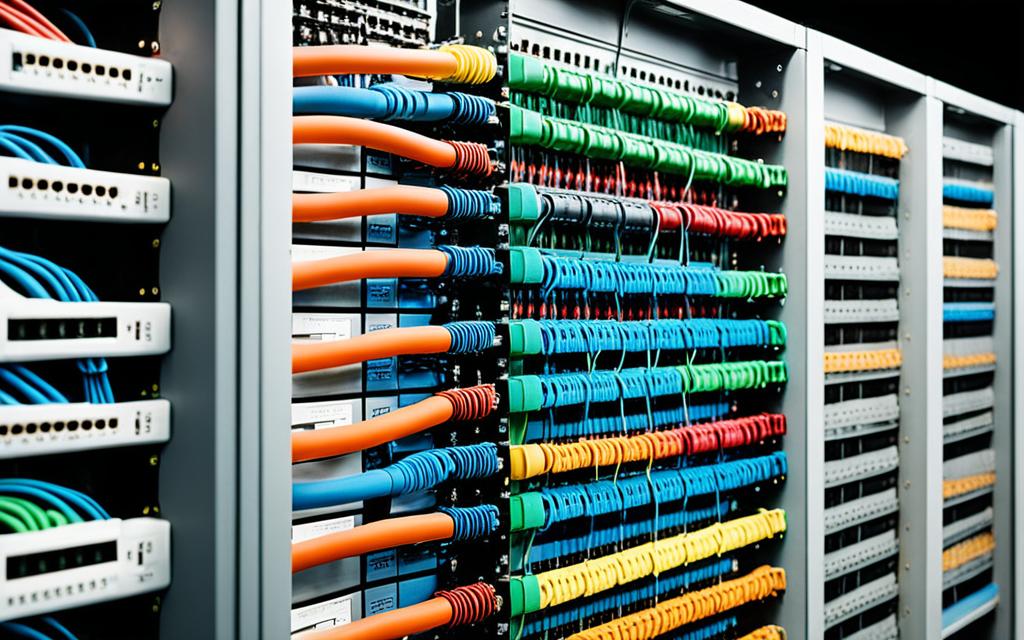

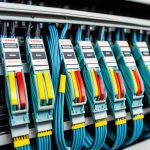



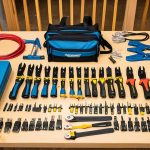

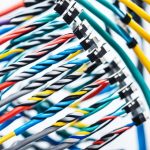




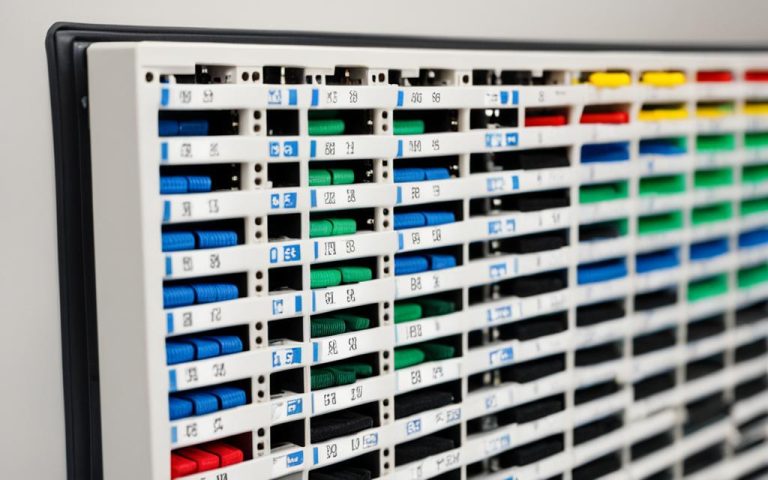

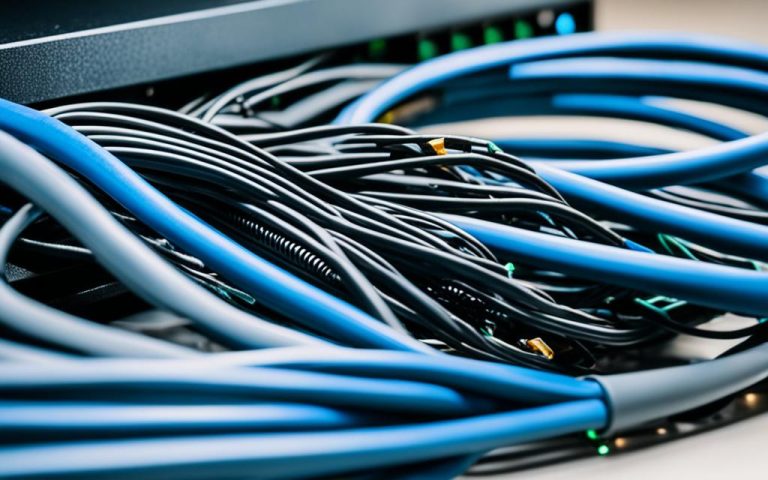


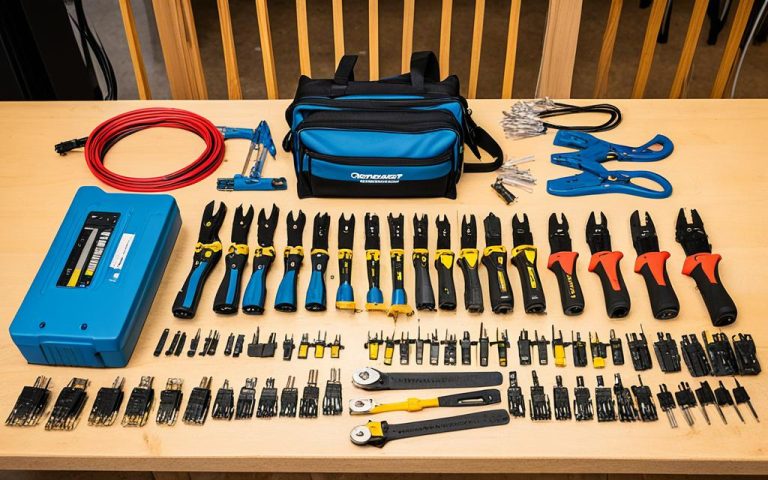
One Comment